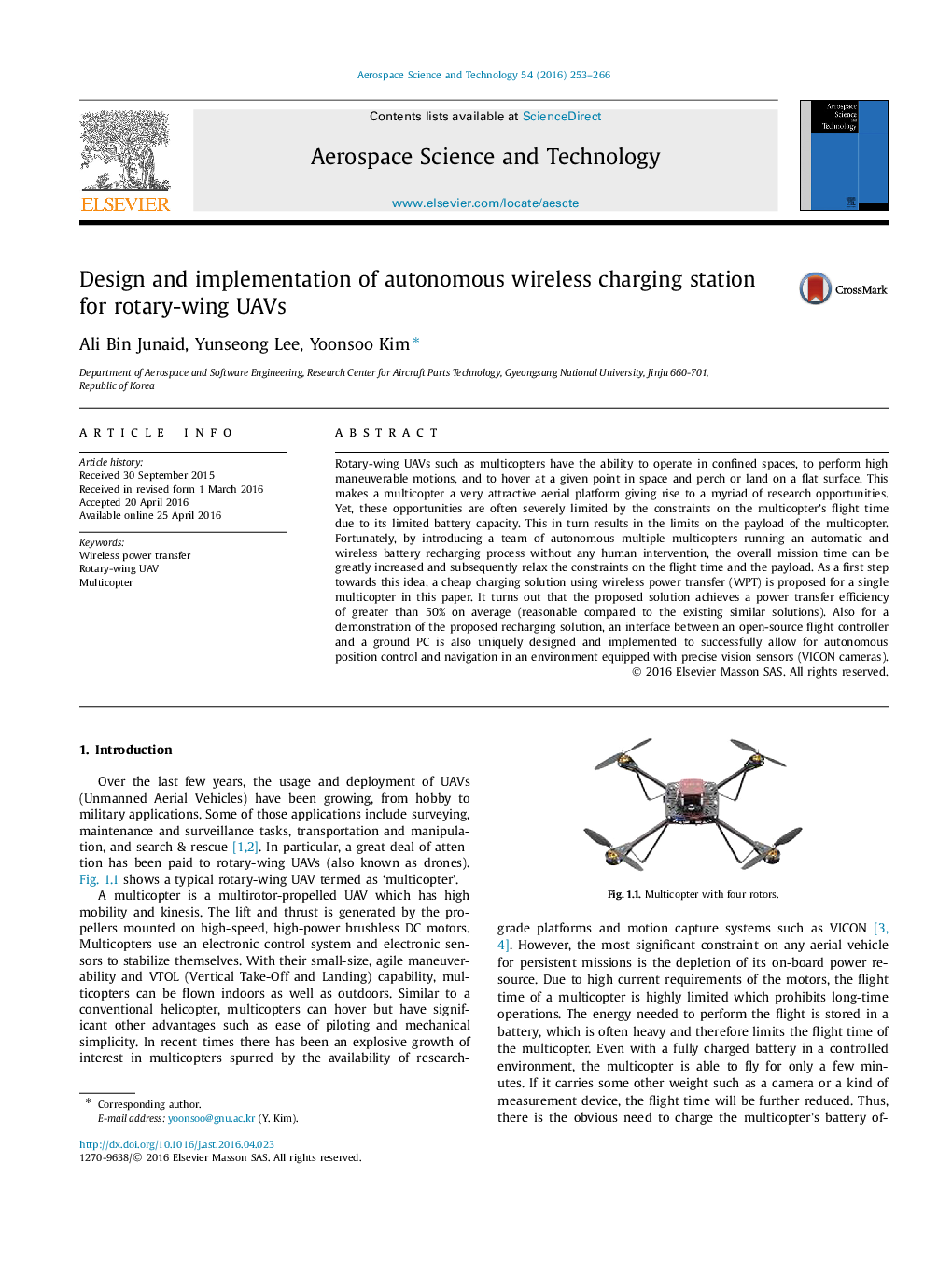| Article ID | Journal | Published Year | Pages | File Type |
|---|---|---|---|---|
| 8058591 | Aerospace Science and Technology | 2016 | 14 Pages |
Abstract
Rotary-wing UAVs such as multicopters have the ability to operate in confined spaces, to perform high maneuverable motions, and to hover at a given point in space and perch or land on a flat surface. This makes a multicopter a very attractive aerial platform giving rise to a myriad of research opportunities. Yet, these opportunities are often severely limited by the constraints on the multicopter's flight time due to its limited battery capacity. This in turn results in the limits on the payload of the multicopter. Fortunately, by introducing a team of autonomous multiple multicopters running an automatic and wireless battery recharging process without any human intervention, the overall mission time can be greatly increased and subsequently relax the constraints on the flight time and the payload. As a first step towards this idea, a cheap charging solution using wireless power transfer (WPT) is proposed for a single multicopter in this paper. It turns out that the proposed solution achieves a power transfer efficiency of greater than 50% on average (reasonable compared to the existing similar solutions). Also for a demonstration of the proposed recharging solution, an interface between an open-source flight controller and a ground PC is also uniquely designed and implemented to successfully allow for autonomous position control and navigation in an environment equipped with precise vision sensors (VICON cameras).
Keywords
Related Topics
Physical Sciences and Engineering
Engineering
Aerospace Engineering
Authors
Ali Bin Junaid, Yunseong Lee, Yoonsoo Kim,
